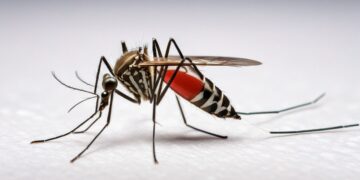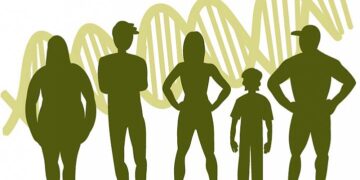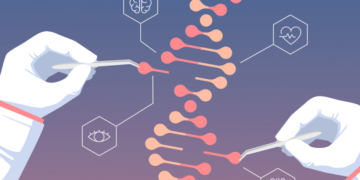Researchers at the University of Virginia have found 14 genes that might be a potent cause and three that can help in the prevention of weight gain and obesity. Scientists found the observations pave the path for treatments to combat a common health problem that affects more than 40% of adults living in the United States.
Eyleen O’Rourke of UVA’s College of Arts & Sciences, the School of Medicine’s Department of Cell Biology said, “There are hundreds of variations in the genetic makeup that can be seen in the people suffering from obesity and other illnesses. To overcome this concern, an automated pipeline is being developed which would test hundreds of genomes for their role in causing obesity simultaneously. On our first run of the automated pipeline system, we have identified around 12 genes that cause and three genes that help in curing obesity.” O’Rourke also said that this approach will accelerate the process of curing obesity and help in reducing the burden on society.

The research done by O’Rourke’s new research has shed light on the complex intersections of obesity, diet, and our DNA. Obesity has become an epidemic in the past few decades, driven in large part due to consuming high-calorie diets and having food that has tons of processed sugars and salts. Also, today’s lifestyle that involves mostly sedentary activities has a huge role in the development of obesity as well. But our genetics also play a very important role in regulating fat storage and also determine how effectively our bodies can burn out the fat as fuel. So we could seek to inactivate these factors with drugs and uncouple excessive eating from obesity.
Scientists who study the genome have identified hundreds of genes that are related to obesity. This means that the genes are more or less prevalent in masses who are obese than in people with a healthy weight. The challenge is to determine the genes that are either promoting or preventing weight gain in an obese population. To help with this problem, O’Rourke and her team turned to worms known as C. Elegans for help. These tiny worms in rotting vegetation and survive by feasting on microbes. However, they share more than 70% of our genes, and just like humans, they also become obese if they are fed excessively.
The worms have produced great benefits for science. They’ve been used to comprehend the working of some commonly used drugs that include the most used antidepressant Prozac and the glucose-stabilizing drug in metformin. If that is not enough to look impressive, three Nobel prizes in the last 20 years were awarded for the discovery of cellular processes that were first observed in worms but then found to be of critical importance to human diseases such as cancer and neurodegeneration. They’ve also helped in the development of medication based on RNA Technology.

The proposed obesity model, assisted with machine learning-testing, helped researchers in identifying 14 genes in the body that cause obesity and three others that help in its prevention. Interestingly, they found that blocking the action of the three genes that prevented the worms from becoming obese also led to them living longer and having a better neuro-locomotory function. These are some of the important benefits that drug developers would hope to obtain from anti-obesity medicines.
More work needs to be done on the concerned topic. But the researchers say the indicators are quite promising.
Also Read: Even after being banned, tobacco is displayed on the TV.
























